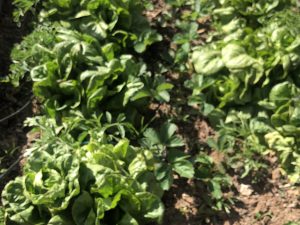Oregano: By Reputation Only
Reputation and ability bring any organism, whether plant or person, into the spotlight. Carl Linnaeus left his mark by formalizing the modern system of naming organisms. Gregor Mendel discovered rules of heredity. George Washington Carver, an agricultural scientist, taught crop and soil improvement. While none of these botanical heavyweights might exist on the tip of your tongue, there are other biological things that have affected humankind for hundreds of years. Like the pizza-topping herb oregano.
Thousands of years ago, before the Mediterranean diet was labeled as such, oregano was a premier herb. Like many plants that have aligned themselves with humans, oregano assured its cultivation and demand. Oregano and its cousin, marjoram, are native to the Mediterranean region, but quickly spread throughout the plant-easy climate of the northern hemisphere. Oregano became a highly favored herb with multiple uses.
Back in the days of chariot races, the Greeks used oregano on the inside and outside of people. Origanum. vulgare was the Greek physician’s choice, curing narcotic overdoses, convulsions, and dropsy. Oregano was also used to treat bruises and chariot crashes that created open wounds. During Elizabethan times, oregano was labeled for curing sour stomach, scurvy, scabs, cough, and yellow jaundice. Present day herbalists still use oregano because of its warming factor. Scientists are studying its anti-bacterial and anti-inflammatory properties. The components of oregano have been known to assist in diminishing inflammation and infection. The health benefits to humans are still being explored while farmers and ranchers use oregano oil on livestock for skin problems, wounds, and muscle pain.
There are two main types of oregano. Common oregano, or Origanum vulgare, is widely used for cooking. Greek oregano, or Origanum heracleoticum, is also used for cooking and has a stronger flavor. Greek oregano is considered a tender perennial, not lasting through a cold winter. Common oregano is much hardier. Oregano’s needs are simple; sandy loam soil not heavily watered or fertilized. (Large amounts of fertilizer may change the flavor of the herb. Overwatering will create the plight of many plants, rot and disease.) Oregano plants may be propagated by division, cuttings, and seeds.
Harvest comes early with oregano. It may be used fresh or dried, with dried leaves having stronger flavor. Oregano leaves may be snipped when the plant reaches just six inches but waiting until its flowers will provide a better culinary delight. If you choose to dry the leaves, hang sprigs upside down in a cool, dry place. Use a fan in the room to maintain air circulation. When sprigs are dry, just pick off leaves and store them in an air tight container for up to three years.
Dried oregano is a part of Italian, Mexican, Argentine, Turkish, Greek, Portuguese, and other Mediterranean cuisines. It is used on meats, vegetables, fish, salads, and pizzas. Here in California, oregano is grown and used for flavorful herbs, ornamental landscaping and herbal remedies.
While Linnaeus, Mendel, and Carver may not be familiar names, that pizza herb—oregano—should be on your short list. With many uses and benefits to all chariot drivers like you, a good reputation is always in high demand.
Julie Silva is a University of California Cooperative Extension Master Gardener of Tuolumne County.

